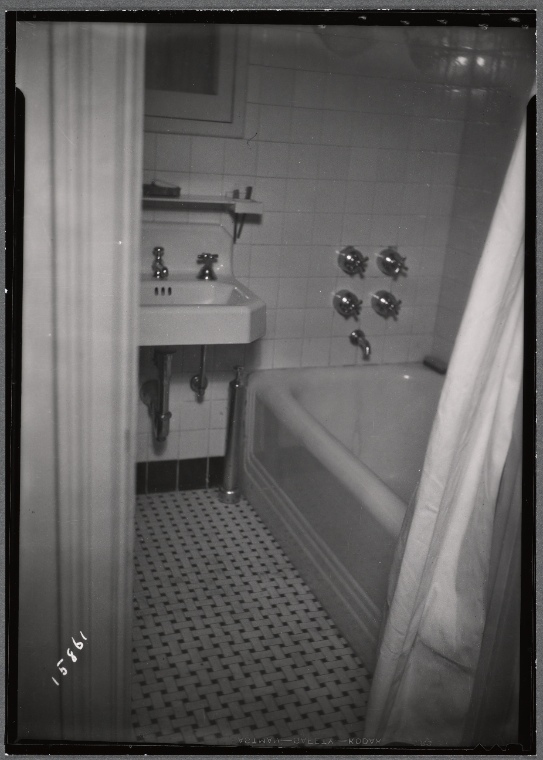Next Chapter, Barrier-Free Library
Design for a Lifetime, or: "What Do We Do About the Bathtub?"
![By Sba2 at en.wikipedia Uploader notes: "Use this image as needed, but for uses other than personal, please credit as "Photo by Chalmers Butterfield"." [CC-BY-2.5 (http://creativecommons.org/licenses/by/2.5), GFDL (www.gnu.org/copyleft/fdl.html) or CC-BY-SA-3.0 (http://creativecommons.org/licenses/by-sa/3.0/)], from Wikimedia Commons Elderly Woman , B&W image by Chalmers Butterfield](http://upload.wikimedia.org/wikipedia/commons/thumb/7/7d/Elderly_Woman_%2C_B%26W_image_by_Chalmers_Butterfield.jpg/256px-Elderly_Woman_%2C_B%26W_image_by_Chalmers_Butterfield.jpg) Photo by Chalmers Butterfield, from Wikimedia Commons Would you consider New York City "age-friendly"? That is, is it a place where people of all ages—including the very old—can feel comfortable, safe, and happy?
Photo by Chalmers Butterfield, from Wikimedia Commons Would you consider New York City "age-friendly"? That is, is it a place where people of all ages—including the very old—can feel comfortable, safe, and happy?
One million people aged 65 and over call New York City home, and a half-million more are expected to swell those ranks by 2030. New York City's top-notch public transportation system and rich access to cultural institutions contribute toward making it a place where these folk will want to stay; most are not planning to leave for southerly climes anytime soon, if ever.
The mayor, the NYC Council, and the dedicated staff of the New York Academy of Medicine joined the worldwide efforts to create a more age-friendly city several years ago, forming Age-Friendly NYC, and formally pledged their commitment at the First International Conference on Age-Friendly Cities in Dublin, Ireland in 2011. A dynamic coalition of governmental entities, professional institutions and cultural and other nonprofit organizations has shared their expertise, resulting in a collection of Tools and Resources that point the way for any wishing to work in this area, and for those seeking out age-friendly businesses, cultural opportunities, or educational institutions.
The American Institute of Architects' trailblazing New York Chapter stepped up to the plate by forming a Design for Aging Committee in 2010: Their goal: "to increase public awareness of the needs of the elderly in an urban environment and by designing to accommodate those needs... to create a more age-friendly City for all to enjoy." They produced a groundbreaking full-day event, Booming Boroughs: Redesigning Aging-in-Place in NYC, a charrette that brought together experts from architecture, interior design, urban planning, environmental gerontology and related fields to come up with practical and creative ways to design so New Yorkers can live out their lives in familiar surroundings amidst friends and family.

So, what does all this have to do with bathtubs? It turns out that the ubiquitous bathtub is a frequent topic of often-anguished conversation among those in the field of designing for later life. The tubs seem fraught with danger no matter one's age, and the risks only increase through the lifespan. Fortunately there are lots of alternatives out there. More than one panelist seemed happy to encourage clients to let go of the tub. While it may seem like an old friend to many of us they made the point brilliantly and the bathtub may indeed not be as essential as we think.
Read E-Books with SimplyE
 With your library card, it's easier than ever to choose from more than 300,000 e-books on SimplyE, The New York Public Library's free e-reader app. Gain access to digital resources for all ages, including e-books, audiobooks, databases, and more.
With your library card, it's easier than ever to choose from more than 300,000 e-books on SimplyE, The New York Public Library's free e-reader app. Gain access to digital resources for all ages, including e-books, audiobooks, databases, and more.
If you don’t have an NYPL library card, New York State residents can apply for a digital card online or through SimplyE (available on the App Store or Google Play).
Need more help? Read our guide to using SimplyE.